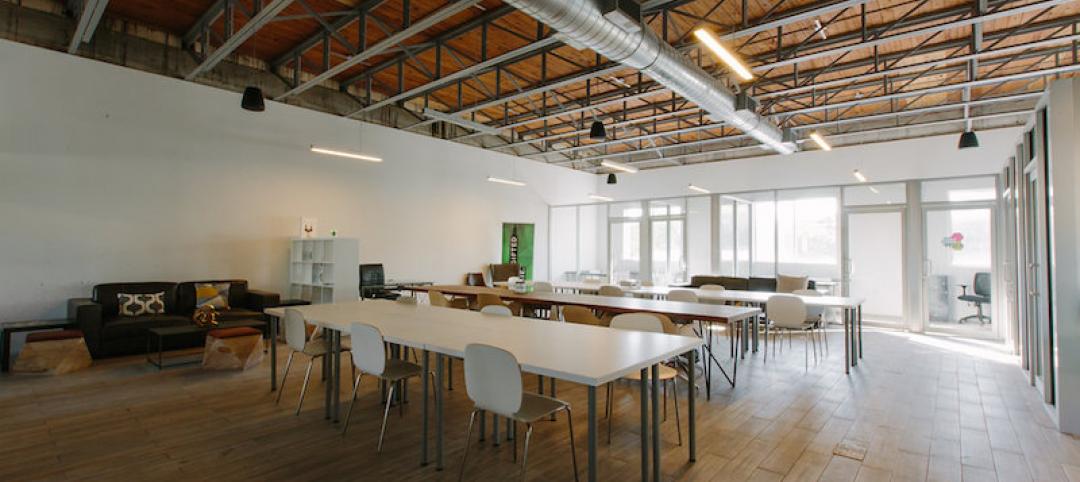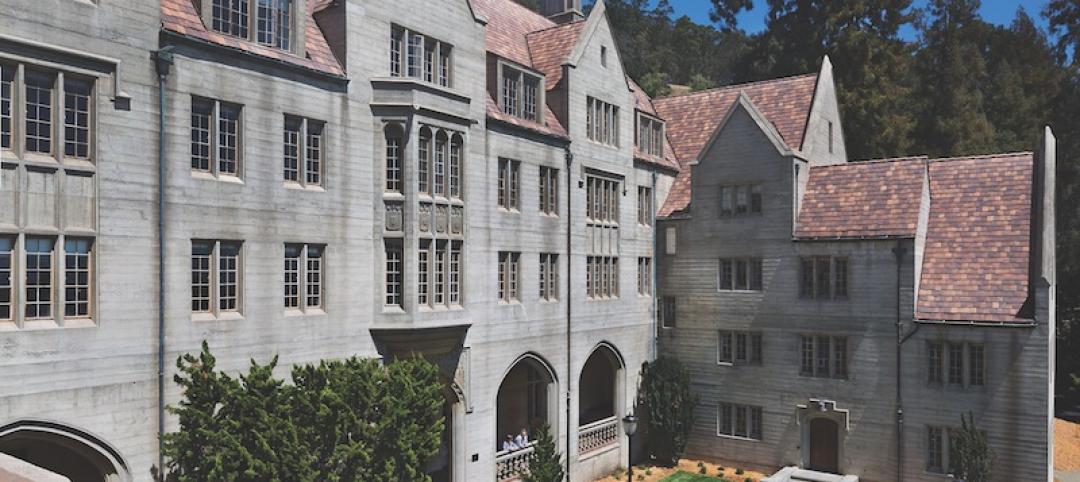In a former gold mine in Lead, S.D., an underground research facility is being renovated for a major experiment that, when completed in two years, would be the most sensitive dark-matter detector ever produced, capable of detecting collisions between galactic dark matter and regular matter within an unprecedented range.
Dark matter accounts for 85% of all matter. It affects the motion of galaxies, bends light, and influences the very structure of the universe. The LUX-ZEPLIN (LZ) experiment (which stands for Large Underground Xenon and ZonEd Proportional scintillation in Liquid Noble gases) will be conducted in the Davis Cavern at Sanford Underground Research Facility, or SURF, which is shielded from cosmic background radiation by nearly a mile of rock.
Architects and engineers with LEO A DALY designed the renovations to Davis Cavern at the same time as LZ’s team of 220 scientists finalized the design of the experimental apparatus itself. LZ holds 10 tons of liquid xenon, making it about 30 times larger and 100 times more sensitive than a previous LUX experiment that SURF conducted between 2012 and 2016.
“The level of coordination and flexibility required, in a tight underground space, with parameters constantly evolving, and with extraordinary safety and cleanliness considerations, made this one of the most challenging and exhilarating projects we’ve ever done,” said Steven Andersen, a senior architect and project manager with LEO A DALY in Minneapolis.
LZ was selected by the U.S. Department of Energy (DOE) and the U.S. National Science Foundation as one of the three G2 (for Generation 2) dark matter experiments. In February 2017, the project passed a DOE review and approval stage known as “Critical Decision 3,” which accepted the final design and formally launched construction.

When this renovation and new installations are completed in 2020, the LZ experiment will be 30 times larger and 100 times more sensitive than a previous dark-matter experiment that took place between 2012-2016. Image: SURF, courtesy of LEO A DALY
The experiment—which will take place on the Davis Campus that’s 4,850 feet below ground level—is a collaboration among scientists and engineers from 37 institutions in the U.S., United Kingdom, Portugal, Russia, and Korea. It is one of the few second-generation projects investigating the theory that dark matter is made up of weakly interactive massive particles (WIMPS). Direct detection of WIMPS would be a major discovery in this field.
John Keefner, underground operations engineer with SURF, said in a prepared statement that planning for this experiment started even before LUX was built. “We’re finally at the point where we can begin to refit the cavern and existing infrastructure to all for the installation of LZ.”
The renovation includes removing an existing cleanroom, tearing down a wall between two former low-background counting rooms, installing a new hoist system, building a work deck and modifying the water tank itself to accommodate the larger cryostat. A wall in the lower level of Davis Cavern will be removed to make way for four compressors that will be used for emergency xenon storage recovery. Other renovations include a radon reduction room and a xenon storage room.
This renovation work is being handled by Ainsworth Benning Construction, and will include updates to the cavern’s plumbing, electrical and ventilations systems, after which the scientists can begin installing the experiment itself. This work is complicated by the fact that on the other side of the cavern is the entrance to the Majorana Demonstrator Project, another sensitive experiment that requires an extremely clean environment.
Related Stories
Reconstruction & Renovation | Jan 23, 2018
New co-working space will focus on serving local, African-American youth in Miami
The new space has been dubbed ‘Tribe.’
Reconstruction & Renovation | Jan 15, 2018
Less is more for this D.C. law firm’s renovation
The renovation will consolidate the firm from six offices to five.
Reconstruction & Renovation | Dec 21, 2017
Interactive map includes detailed information on historic New York City buildings
The New York City Landmarks Preservation Commission launched a new, enhanced version of its interactive map, Discover NYC Landmarks.
Reconstruction Awards | Dec 1, 2017
Rescue mission: Historic movie palace is now the centerpiece of Baltimore’s burgeoning arts hub
In restoring the theater, the design team employed what it calls a “rescued ruin” preservation approach.
Reconstruction Awards | Dec 1, 2017
Gothic revival: The nation’s first residential college is meticulously restored
This project involved the renovation and restoration of the 57,000-sf hall, and the construction of a 4,200-sf addition.
Reconstruction Awards | Dec 1, 2017
Rockefeller remake: Iconic New York tower is modernized for its next life
To make way for new ground-floor retail and a more dramatic entrance and lobby, the team removed four columns at the ground floor.
Office Buildings | Dec 1, 2017
Telecommunications company’s remodeled headquarters makes use of its unique H shape
lauckgroup designed the new headquarters space.
Reconstruction Awards | Nov 29, 2017
Amazing grace: Renovation turns a church into elegant condos
The windows became The Sanctuary’s chief sales edge.
Giants 400 | Oct 30, 2017
Rewriting history: Legacy building conversions spur redevelopment in America’s older cities
Businesses, developers, and civic leaders are repurposing existing structures to celebrate history, attract tenants, and serve as a catalyst for future development.
Giants 400 | Oct 26, 2017
Top 115 reconstruction construction firms
Gilbane Building Co., Structure Tone, and Turner Construction Co. top BD+C’s ranking of the nation’s largest reconstruction sector contractors and construction management firms, as reported in the 2017 Giants 300 Report.
















